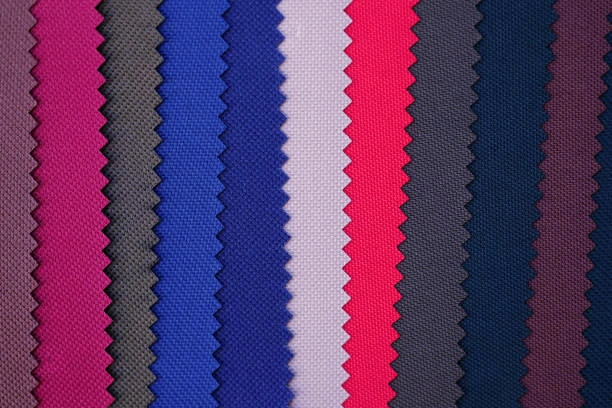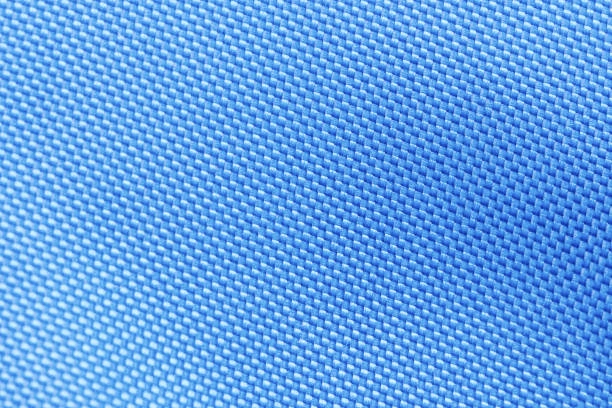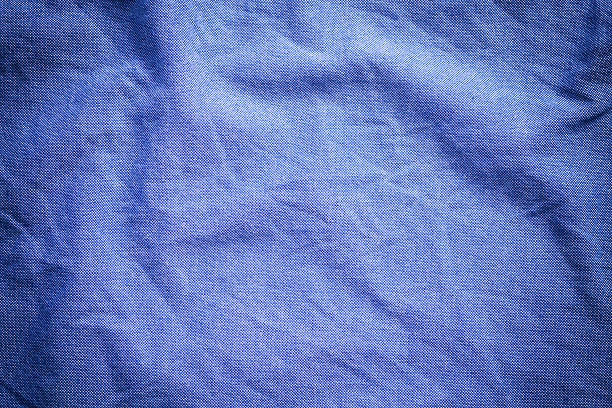Have you ever wondered about the secret behind the durability of your favorite backpack or the crisp feel of your go-to button-down shirt? Often, the answer lies in a remarkable material known as Oxford fabric. While many of us are familiar with its distinctive appearance, a deeper question emerges: What is Oxford fabric made of? We’re here to unravel the precise components that give this versatile textile its strength, comfort, and unique characteristics. Join us as we explore the different fibers that contribute to the enduring appeal of Oxford fabric.
Understanding Oxford Fabric‘s Core Materials

When we talk about Oxford fabric, our minds often jump to its characteristic basket weave – that slightly textured, durable pattern that makes it so recognizable. However, to truly understand this versatile textile, we need to go a step further and explore its fundamental building blocks: the fibers themselves. The answer to “What is Oxford fabric made of?” isn’t a single, simple material; rather, it’s a story of different fibers chosen for specific purposes, each contributing to the fabric’s overall performance and application.
Historically, Oxford fabric began its journey primarily with natural fibers. As textile technology evolved and demand for specific performance features grew, synthetic alternatives became increasingly popular. This evolution has led to a diverse range of Oxford fabrics, each tailored to different needs, from breathable apparel to heavy-duty outdoor gear. We’ll delve into the most common materials we find in Oxford fabric today, exploring what each brings to the table.
The Original Foundation: Cotton Oxford Fabric

When Oxford fabric first emerged in the 19th century, cotton was the fiber of choice. It was a natural fit, given cotton’s inherent qualities that align well with the desired characteristics of a comfortable yet durable shirting material. So, what is Oxford fabric made of in its most classic form? Cotton, pure and simple.
- Softness and Breathability: Cotton is well-known for its natural softness and ability to allow air circulation. This makes cotton Oxford fabric incredibly comfortable to wear, especially in warmer climates, preventing that clammy feeling. We often find our favorite casual shirts are made from this material.
- Absorbency: Cotton fibers are highly absorbent, which means they can wick away moisture from the body, contributing to comfort. This also makes them easy to dye, allowing for a wide array of colors in Oxford shirts.
- Classic Aesthetic: Cotton Oxford fabric offers a timeless, slightly textured appearance that has made it a staple in wardrobes for generations. Its natural matte finish contributes to a sophisticated yet understated look.
- Versatility in Fineness: Within cotton Oxford, we see variations like Pinpoint Oxford and Royal Oxford. Pinpoint uses finer yarns and a tighter weave for a more refined texture, while Royal Oxford is the most luxurious, featuring a very fine, almost shimmering weave. These distinctions highlight the versatility of cotton when considering what Oxford fabric is made of.
While synthetic options have gained ground, cotton Oxford fabric remains a beloved choice, especially for apparel, where comfort, breathability, and a classic aesthetic are paramount. We appreciate its natural feel and enduring style.
The Modern Workhorses: Polyester Oxford Fabric

In the realm of modern textiles, polyester stands out as a dominant material for Oxford fabric, especially when durability and performance are key. So, what is Oxford fabric made of when it needs to withstand the elements and heavy use? Often, the answer is polyester.
Polyester is a synthetic polymer renowned for its exceptional strength and resilience. Its widespread use in Oxford fabric applications like bags, tents, and outdoor gear is a testament to its robust properties.
- Exceptional Durability: Polyester fibers are inherently strong and resistant to stretching, shrinking, and abrasion. This makes polyester Oxford fabric incredibly long-lasting, capable of withstanding significant wear and tear without easily degrading. We find this particularly useful in items that take a beating, like school backpacks or camping equipment.
- Water Resistance (inherent & enhanced): While not completely waterproof on its own, polyester has low absorbency, meaning it dries quickly and resists moisture better than natural fibers. More importantly, polyester Oxford fabric readily accepts coatings like polyurethane (PU) or polyvinyl chloride (PVC), which make it highly water-resistant or even fully waterproof. This is a crucial factor when we look for protection against rain or spills.
- Wrinkle Resistance: Polyester’s resilience means that Oxford fabric made from it tends to hold its shape well and resist wrinkling, making it easy to care for and maintain a neat appearance.
- UV Resistance: Polyester offers good resistance to ultraviolet (UV) radiation, which helps prevent fading and degradation when exposed to sunlight, a big plus for outdoor applications.
- Cost-Effectiveness: Generally, polyester is a more economical material to produce than nylon or specialized natural fibers, making polyester Oxford fabric a cost-effective choice for many applications.
The combination of strength, water resistance, and affordability makes polyester Oxford fabric a true workhorse, answering “what is Oxford fabric made of” for a vast array of functional products we use every day.
The High-Performance Contender: Nylon Oxford Fabric

When maximum strength, durability, and a lightweight profile are required, nylon often steps into the spotlight as the fiber of choice for Oxford fabric. So, what is Oxford fabric made of when performance is paramount? It’s frequently nylon.
Nylon, another synthetic polymer, is celebrated for its incredible strength-to-weight ratio and superior abrasion resistance, even surpassing polyester in some aspects. This makes nylon Oxford fabric the preferred material for high-stress applications where reliability is non-negotiable.
- Superior Strength and Abrasion Resistance: Nylon fibers are exceptionally tough, making nylon Oxford fabric highly resistant to tearing, punctures, and scuffs. This characteristic is why we often see it in heavy-duty luggage, military gear, and high-quality outdoor equipment.
- Excellent Elasticity: Nylon has good elasticity, meaning it can stretch and return to its original shape. This flexibility contributes to its overall durability and resistance to breaking under stress.
- Lightweight: Despite its incredible strength, nylon is surprisingly lightweight. This makes nylon Oxford fabric an ideal choice for items where reducing bulk and weight is important, such as backpacking gear.
- Accepts Coatings Well: Like polyester, nylon Oxford fabric readily accepts water-resistant coatings (PU, PVC), making it an excellent barrier against moisture. We rely on this for keeping our valuables dry in challenging conditions.
- Soft Hand Feel: Compared to some other synthetics, nylon can have a relatively soft and smooth hand feel, which adds to its appeal in certain applications.
While often more expensive than polyester, the enhanced performance and longevity of nylon Oxford fabric make it a worthwhile investment for products where ultimate durability is a priority. We trust nylon Oxford for our most demanding adventures.
Beyond Single Fibers: Blends and Specialized Coatings
While cotton, polyester, and nylon are the primary answers to “What is Oxford fabric made of?” there’s more to the story. Textile innovation often involves combining materials or adding specialized finishes to enhance specific properties.
- Fiber Blends: Sometimes, Oxford fabric is created using a blend of different fibers. For instance, a cotton-polyester blend might combine the breathability and softness of cotton with the durability and wrinkle resistance of polyester. We see these blends aiming to strike a balance between various desirable characteristics.
- Ripstop Reinforcement: Many Oxford fabrics, particularly those made from polyester or nylon, are constructed with a “ripstop” weave. This isn’t about what the fabric is made of in terms of material, but how it’s made. Stronger reinforcement threads are woven into the fabric at regular intervals, creating a grid-like pattern. This design prevents small tears from spreading, significantly increasing the fabric’s tear resistance. We recognize this distinct square pattern, which is invaluable for preventing rips from becoming large holes in items like tents or outdoor apparel.
- Performance Coatings: As we touched upon earlier, coatings are paramount for transforming Oxford fabric from merely durable to highly water-resistant or waterproof. These aren’t part of what the fabric is made of in terms of fiber, but they are crucial additions that define its functionality.
- Polyurethane (PU) Coating: This is perhaps the most common coating, offering flexibility and varying degrees of water resistance. The thickness of the PU coating (e.g., measured in millimeters or ‘mm’ for water column pressure) determines its waterproof rating.
- Polyvinyl Chloride (PVC) Coating: PVC coatings are heavier and more rigid than PU, providing superior waterproofing and abrasion resistance, often used for very heavy-duty applications.
- Durable Water Repellent (DWR) Finish: A DWR finish is a thin, usually fluoropolymer-based coating applied to the outer surface of the fabric. It causes water to bead up and roll off, preventing the fabric from wetting out. While DWR isn’t a waterproof barrier itself, it significantly enhances the fabric’s water repellency.
- UV Protection: Some Oxford fabrics are treated with UV inhibitors to prevent degradation and fading from prolonged sun exposure, important for outdoor gear.
Understanding these blends and coatings gives us a comprehensive picture of the diverse properties an Oxford fabric can possess, further answering “What is Oxford fabric made of?” in a functional sense.
What Type of Fabric is Oxford?
To consolidate our understanding, let’s look at a quick overview of the main materials and their contributions to Oxford fabric:
| Material | Key Properties | Common Uses | Benefits for Us |
|---|---|---|---|
| Cotton | Soft, breathable, absorbent, classic aesthetic | Shirts (casual, dress), comfortable apparel | Ensures comfort for everyday wear; timeless style. |
| Polyester | Durable, wrinkle-resistant, good water resistance (especially with coatings), UV resistant, cost-effective | Backpacks, luggage, tents, outdoor covers, pet beds | Provides long-lasting reliability and protection from elements at an accessible price point. |
| Nylon | Superior strength, abrasion resistance, lightweight, excellent elasticity, often highly water-resistant (with coatings) | Creates a water-resistant/waterproof barrier, enhances durability | Offers ultimate durability for demanding situations where reliability is crucial. |
| Blends | Combines properties of individual fibers (e.g., cotton comfort + polyester durability) | Varied, depending on blend composition | Provides a balance of desirable characteristics, tailoring fabric to specific needs. |
| Coatings (PU/PVC) | Creates water-resistant/waterproof barrier, enhances durability | All types of outdoor/protective Oxford fabrics | Keeps our belongings dry and protected from moisture. |
This table helps us quickly grasp the diverse answers to “What is Oxford fabric made of?” and how those material choices impact the final product.
The Impact of “What is Oxford Fabric Made Of” on Our Daily Lives
The choice of material for Oxford fabric directly impacts its performance, feel, cost, and suitability for various applications. This understanding allows us to make more informed decisions as consumers.
- For Apparel: If we’re looking for a breathable, comfortable shirt, we’ll gravitate towards cotton Oxford. Its natural fibers ensure a soft touch and good airflow, perfect for everyday wear or a crisp business-casual look. The natural properties of cotton are key to what this Oxford fabric is made of.
- For Bags and Outdoor Gear: When we need durability, water resistance, and longevity, polyester or nylon Oxford fabric, often with a PU or PVC coating, becomes our go-to. The robust synthetic fibers can withstand heavy loads, abrasion, and harsh weather, protecting our essentials whether we’re commuting or embarking on an adventure. The synthetic composition is central to what this type of Oxford fabric is made of.
- For Specialized Needs: For items requiring extreme tear resistance, like a high-performance tent or certain tactical gear, we’ll seek out ripstop nylon or polyester Oxford, often with advanced coatings. This specific construction and material selection are crucial aspects of what these specialized Oxford fabrics are made of.
Ultimately, knowing what Oxford fabric is made of empowers us to choose products that align with our needs and expectations. It’s a testament to how textile science and manufacturing have evolved to create incredibly versatile and reliable materials.
Conclusion: The Material Story of Oxford Fabric
We’ve peeled back the layers to reveal the fundamental answer to “What is Oxford fabric made of?” It’s clear that while the defining characteristic is its unique basket weave, the true versatility and broad application of Oxford fabric stem from the diverse materials used in its construction.
From the natural comfort and classic appeal of cotton to the robust durability and weather-resistant capabilities of polyester and nylon, each fiber brings its own set of advantages. The addition of specialized coatings and reinforcing weaves further enhances its performance, allowing Oxford fabric to meet a myriad of demands.
Understanding these core components helps us appreciate why Oxford fabric is so prevalent in our daily lives, from our clothing to our adventure gear. It’s a fabric that consistently delivers on its promise of durability, functionality, and often, style. So, the next time you encounter an item made of Oxford fabric, you’ll have a deeper appreciation for the materials that make it so resilient and reliable.
